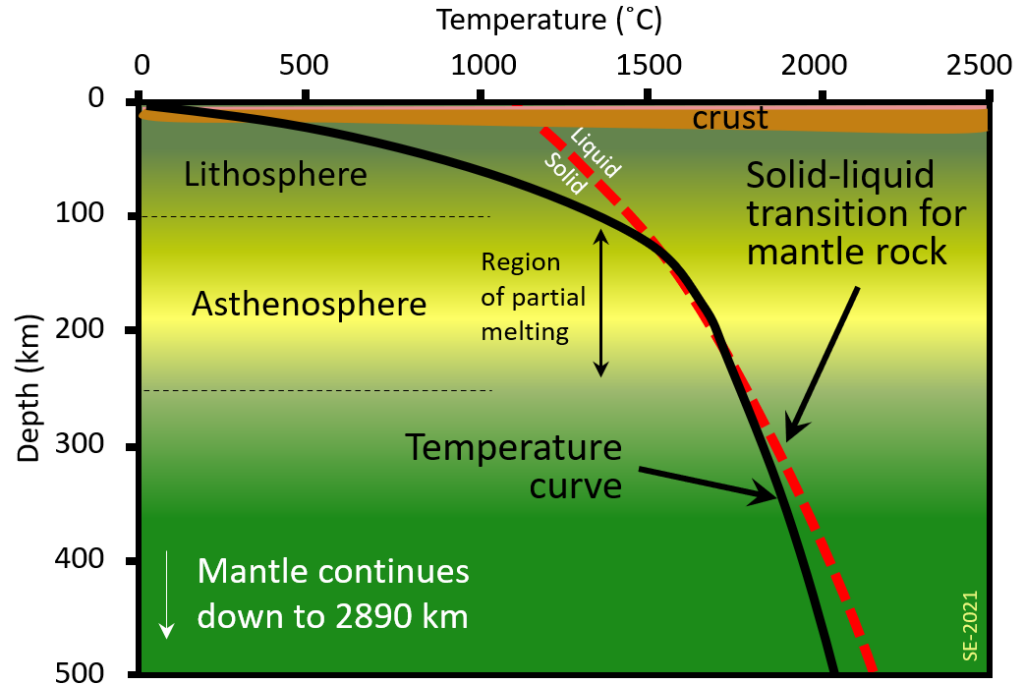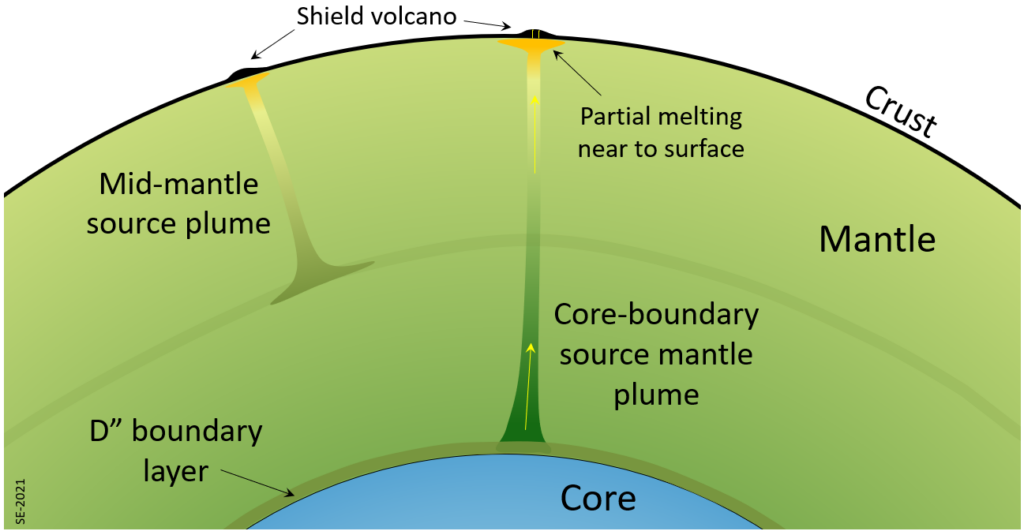2.3 Earth’s Interior
Steve Earle
As shown on Figure 2.3.1 the interior of the Earth is comprised of a number of concentric layers, starting with the crust at surface, down through the different parts of the mantle, and then into the outer and inner core.

The crust is the Earth’s thin outer layer, and is shown in more detail in the inset of Figure 2.3.1. It makes up approximately 0.2% of the Earth’s radius, and therefore is proportionally no thicker than the skin on an apple. The continental crust is dominated by intrusive igneous rocks, with lesser amounts of various types of volcanic sedimentary, and metamorphic rocks, and with an overall composition similar to that of granite. It is 30 to 40 km thick in most areas (thicker in mountainous areas, and thinner near to the edges of the continents). The oceanic crust is made up mostly of mafic igneous rocks, including basalt in the upper several hundred metres, and gabbro at depth. The oceanic crust is 5 to 6 km thick in most areas. The mafic rocks of the oceanic crust are denser than the granitic rocks of the continental crust.
The crust rests on the mantle, which is made up of rocks with an ultramafic composition (dominated by ferromagnesian silicate minerals). The upper part of the mantle is rigid or brittle, just like the crust, and this is known as the lithospheric mantle. That rigid part of the mantle plus the crust is called the lithosphere. The temperature within the Earth increases with depth, from close to 0⁰ C at surface to almost 5000⁰ C in the centre of the core, but that rate of increase isn’t linear (Figure 2.3.2). The temperature rises quite rapidly within the lithosphere but the rate slows within the lower mantle. At between about 100 and 250 km depth the temperature is very close to, or even slightly above, the melting temperature for mantle rock and so the mantle rock within that depth range is partly molten. This layer is known as the asthenosphere because the rock there is weaker (softer, or more plastic-like) than in the rest of the mantle.

Below the asthenosphere the mantle rock is solid, but it is not rigid, and in response to long-term stress created by heat transfer from the core, it is slowly convecting. As we’ll see in the next section, that convection is critical to the process of plate tectonics.
There is evidence that mantle plumes exist within the mantle, where a mantle plume is a column of hot mantle rock (not magma) that rises either from near to the core-mantle boundary, or from the mid-mantle region, and reaches the upper mantle just below the crust (Figure 2.3.3). Mantle plumes are thought to be responsible for chains of volcanoes like the Hawaiian Islands, and for other volcanic phenomena that will be discussed in Chapter 3 and Chapter 5.

The Earth’s core is mostly made of iron, with up to 10% nickel and a small proportion of other elements, including silicon, oxygen and sulphur. The temperature at the core-mantle boundary is close to 4000⁰ C and that gradually increases to about 5000⁰ C at the Earth’s centre. In the outer part of the core that temperature is high enough for the iron-nickel alloy to be liquid, but the pressure is so extreme at greater depth that the inner core is solid. The transfer of heat from below leads to convection in the outer core, and, because the core is metallic, that convection generates the Earth’s magnetic field.
